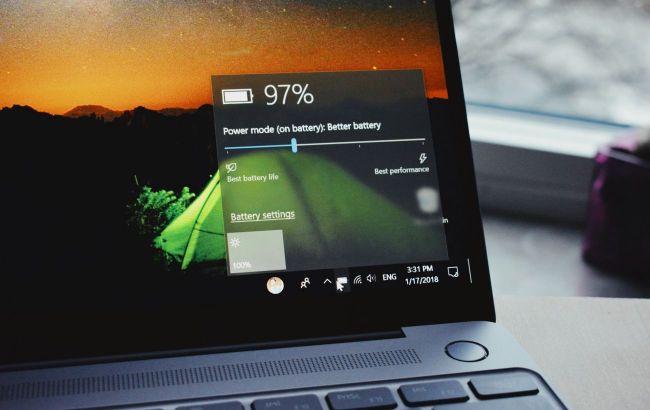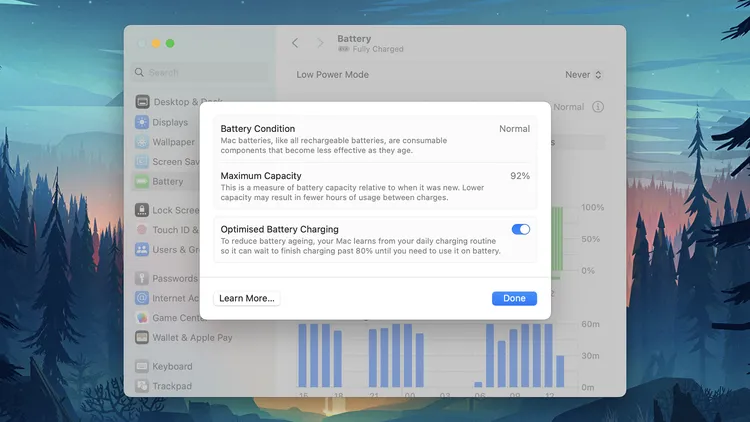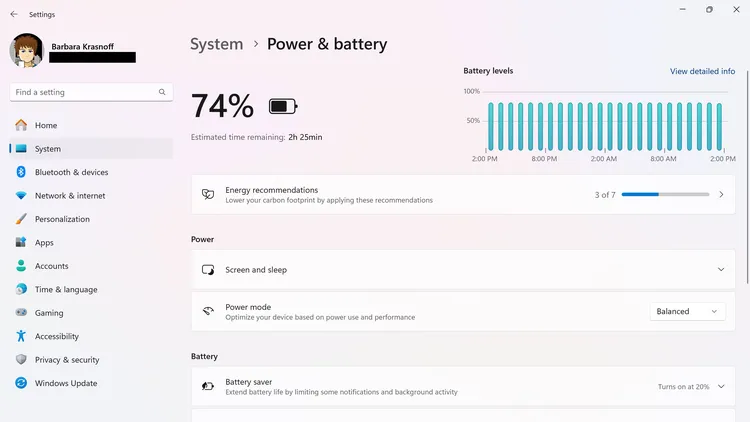How to maximise battery life on your laptop: Simple tips
 Tips to maximise battery life on your laptop (photo: Unsplash)
Tips to maximise battery life on your laptop (photo: Unsplash)
The rechargeable lithium-ion batteries that power most of our laptops naturally degrade over time. Most modern laptops now come with some sort of built-in smart charging technology to limit the number of full charges.
RBC-Ukraine dwells on ways to ensure maximum battery life for your MacBook or Windows laptop regarding The Verge, an American computer technology website.
General battery health
As with smartphones, due to the chemical reactions that take place inside your laptop battery, fully charging or fully discharging puts additional stress on the battery and shortens its life.
According to Microsoft, it's not recommended to keep your laptop plugged in at 100 percent charge when it comes to battery longevity, so it's recommended that users try to avoid full charging and full discharging as much as possible.
Then there's temperature: heat and cold are unfavorable for battery health. They affect the chemical reactions inside the battery and increase internal wear and tear, so try to keep your laptop away from hot environments and cold as much as possible.
You also need to consider temperature and charging if you are going to put your laptop away for a while. Make sure it is stored in a cool and dry place, and charge the battery to 50 percent before turning off the laptop. This limits the chance of damage due to complete discharge.
Even simple steps like cleaning the case fans can help: the better the air circulation inside your laptop, the cooler the components will run, and the less power they will consume.
You can also lower the screen brightness and make sure all your software is up to date - newer versions of programs and operating systems are usually more efficient and less demanding.
Tips for keeping your Macbook battery running strong
Apple MacBooks use a built-in feature called Optimized Battery Charging, which only charges the battery to more than 80 percent when it thinks it needs to. According to Apple, temperature and previous charging patterns are used to make this decision.

Modern MacBooks feature Optimized Battery Charging (photo: The Verge)
On Macbooks equipped with an Apple Silicon processor (as opposed to an Intel processor), Optimized Battery Charging is enabled by default.
If for some reason you want to turn it off:
- In the Apple menu, select System Preferences
- On the Battery tab, click the small i next to Battery Status
- You'll see the Optimized Battery Charging toggle on/off.
If you have a Macbook with an Intel processor, this feature may be enabled by default depending on your OS. If you want to check this or turn it on/off:
- In the Apple menu, select System Preferences and Battery
- Go to Battery, then Battery Status
- Find Battery Life Management and turn it on or off
You can further reduce the load on the battery in the Battery tab: tap Settings to set the screen to dim and stream videos in lower quality (reducing the load on the system) when you're running on battery, for example.
There's also a dedicated low-power mode, although Apple doesn't say much about it other than it reduces power consumption.
Select the Low Power Mode drop-down menu, and you can set it to be on all the time, only when you're relying on battery power, or only when you're using a power adapter.
To further reduce power consumption:
- Select the Lock screen tab in the system settings
- Choose when to turn off the display of an inactive laptop using the Turnoff display while on battery power when inactive menu

The Battery page has a low power mode and battery status indicators (photo: The Verge)
Battery health tips for Windows
Windows offers a feature called Smart charging as the equivalent of Optimized Battery Charging for Mac, although its implementation and how it works depends on individual laptop manufacturers.
You'll have to check with your specific system manufacturer to see if your laptop has this feature and whether you can turn it on or off.
There are other power management settings on your computer that can save energy:
- Start Settings from the Start menu
- Select System, then Power and Battery
- Click Screen and Hibernation to set how long the system waits before turning off the screen.
- Select a power mode to tell Windows whether to prioritize performance or battery life
- Click Battery Saver to have Windows Low Power Mode turn on at a certain battery level or stay on indefinitely
- Battery usage can tell you how well your battery is doing and how much power your apps are using
- At the top of the Power & Battery page, you may also see a section called Battery Recommendations. It's a good idea to tap on it and check out some of these recommendations.
As with macOS, make sure you're only running the apps you need to run to further reduce the battery load - it's a good idea to double-check the apps you run with Windows to make sure nothing is running in the background that you're not aware of.

There are several ways to optimize your battery usage on the Power & Battery page (photo: The Verge)

